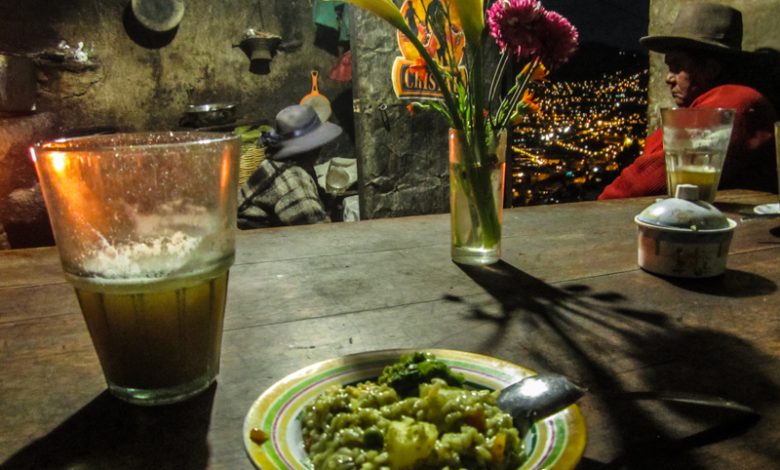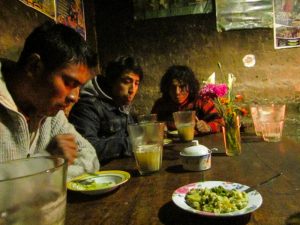A Hidden Delight, Almost at the End of Cuzco

Cuzco presents a majestic, magical, and enchanting scene. From any of its high points you can catch a view of the city surrounded by mountains. Each point shows a different perspective. While you cannot always see the historic center of town, you can always see the valley and portions of the city, as if Cuzco were an ever changing kaleidoscope.
In our travels from point to point we may find ourselves in a welcoming and pleasant, yet hidden corner from which we can appreciate Inca and colonial Cuzco. We see its historical center, with its majestic plazas and enclosed spaces, where Inca, Spanish, and modern come together.
This corner that is now outs is a chichería like which few remain. (A chichería is a traditional place where people go to drink corn beer—chicha—and nibble at small dishes.) It is above the huaca (the sacred stone) of Patallaqta and below the temple of the moon. Both of them belong to the Sacsayhuaman archeological park. Patallaqta also belongs to the Inca neighborhood of Toqocachi which is the current neighborhood of San Blas.

The huaca has almost been forgotten although locals claim that in it were buried the remains of the great emperor Pachacutec who changed destiny. He expanded the empire beyond the Cuzco Valley and restructured the city of Cuzco into its classical Inca form. Although statues to him seem to be found all over the city, where local tradition says he was buried, he seems forgotten. This area is best known today as Mosoqllaqta (Sweet Town) as are the residential zone around it.
In order to arrive at the chichería you must take a bit of a walk. If you prefer a light walk, then you take a bus or taxi up the Circunvalación, the avenue the circles out of the city towards the fortress temple of Sacsayhuaman above it. You get off at the Mosoqllaqta stop, where a flight of stairs begins. You must walk up them until you see the unavoidable sign of fresh chicha, a pole whose end is covered in a red, plastic bag, just about where the stairs end.

Our surprise is great when we turn and look back at the city. This is a marvelous point from which to enjoy its grandeur. Finding a good kitchen that welcomes us into its small and warm dining area is also great. A small fogón, flame fed stove, illuminates the place while the chicha boils prior to fermenting, or a picante ( a spicy dish) heats.
On the dirt floor guinea pigs roam freely, smong the feet of guests. The madre (traditional woman in a broad skirt with a hat nearby) who hosts the guests is very warm and friendly. She offers you excellent service. Her service is the first sign of excellence.

But her chicha, made from natural ingredients and formed by hand, is very refreshing, a proper reward for the climb up the stairs.
Things get even better. She serves her picantes, her spicy dishes, accompanied by a traditional, hand ground hot sauce, an uchukuta as we call it. Huaynos bounce off the background speakers. Some of them are classics and some contemporary.
Most of the guests in this chichería live in the neighborhood. They come most afternoons to have a chicha and maintain alive their customs in this little, almost hidden corner of Cuzco from which, paradoxically, the entire historical center of the city can be seen.




